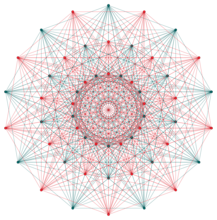UMD Researchers Devise Novel Framework to Advance Quantum Error Correction

Like classical computers, quantum computers require error-correction schemes to reliably perform useful large-scale calculations.
The nature and frequency of errors depends on the quantum computing platform, and while there has been prior work in this area based on qubit-based coding, those ideas are often not directly applicable to devices that store information in bosonic systems such as photonic resonators.
Researchers affiliated with the Joint Center for Quantum Information and Computer Science (QuICS) and the NSF Institute for Robust Quantum Simulation (RQS) are addressing this challenge, developing a new concept built on quantum spherical codes that could make the notoriously fragile information in a photon-based quantum computer less susceptible to errors.
Their scientific work was published in the May 15 issue of Nature Physics. Authors on the paper are Shubham Jain, a third-year doctoral student in physics; Joseph T. Iosue, a fourth-year doctoral student in physics; Alexander Barg, a professor of electrical and computer engineering and an affiliate fellow in QuICS; and Victor Albert, a QuICS Fellow who is a physicist at the National Institute of Standards and Technology and a senior investigator in RQS.
Albert is Jain’s academic adviser, while Iosue is advised by QuICS Fellow and RQS senior investigator Alexey Gorshkov.
Photonic quantum computers utilize photons, which are quantum particles that carry light. Such photons can be trapped and utilized in “cavities”—metal boxes that are used to store and manipulate quantum superpositions of different numbers of photons.
The UMD team is building off prior research for correcting quantum errors in photonic quantum computers, using a process known as cat codes. In typical cat codes, quantum information is stored in quantum superpositions of different photonic signals. Each signal can be represented as a point, and the collective “constellation” of signals forms the corners of a shape, like a triangle, square or another polygon. The bigger the polygon, the better the protection against certain errors.
The researchers’ new framework combines multiple types of photons in more efficient ways than using cat codes alone. Instead of embedding polygons in a circle, the researchers embed polytopes—geometric shapes that exist in higher dimensions—in larger hyperspheres. These polytopes, including ones defined over the complex numbers, are highly symmetrical and offer algebraic properties desirable for error correction.
The team developed 17 new codes from complex polytopes, including two infinite families; along with 27 from real-polytope codes, including eight infinite families; demonstrating superior performance when compared to cat-code encodings. They say this framework opens new possibilities for building multi-oscillator encodings with better error protection.
“Scaling up photonic systems is quite different from scaling up qubits, which only have two states each. By contrast, there can be 0, 1, 2, or [in principle] an arbitrary amount of photons of any given type,” explains Albert, who has adjunct appointments in the University of Maryland’s physics department and Institute for Advanced Computer Studies. “Our codes offer a way to utilize both the number and the type of photon effectively.”
—Story by UMIACS communications group
